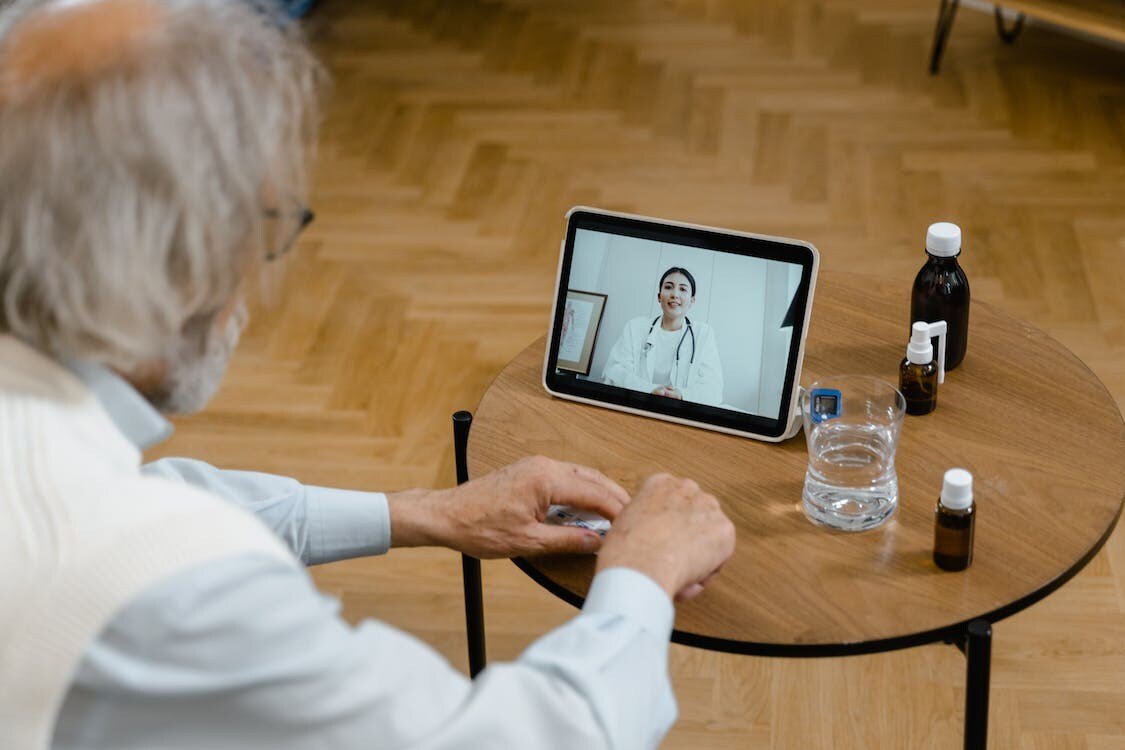The Power of Telehealth: Bringing Lifesaving Mental Health Treatment to Remote Areas

The healthcare industry has always found ways to elevate people’s quality of life. It helps find more ways to treat or save many individuals. While telehealth existed before the COVID-19 pandemic, it was less widely used than now.
The pandemic required social distancing, and the hospitals were filled with patients. It was not surprising that the use of telehealth experienced exponential growth. It provided patients with mild symptoms access to Medicare without risking exposure to the virus in hospitals. Telehealth revolutionized the approach to medicine and healthcare access.
This extends to access to mental healthcare professionals. There’s still some stigma toward individuals who come to see therapists or psychiatrists. However, video calls and appointments through telehealth make it easy for patients to schedule consultations. This is especially true for those living in rural areas who barely have access to hospitals and other institutions.
Telehealth as Lifeline to Rural and Remote Areas
According to the CDC, the rural population comprises 15% of the U.S. population. Injury deaths happen more often in these parts due to motor vehicle crashes and opioid overdoses. Between 2010 and 2020, over 120 hospitals closed in these areas, making it increasingly challenging for them to reopen due to financial barriers.
Considering the challenges rural areas face, telehealth has become an indispensable solution. Telehealth helps practitioners bypass different barriers. Patients can still consult doctors even if their office is in another county. A teleconsultation often suffices if there is no immediate need for the doctor to check on them. As for prescriptions, doctors can send scanned copies to their patient’s email.
Technological advancements like these are making lives more accessible and more convenient. Just imagine how much time and money patients can save with telehealth. One can claim that travel barriers barely apply anymore with that innovation. Though financial barriers are still concerning, patients won’t need to worry about fare. They can also pay the doctors through digital means.
The same applies to mental health treatments in remote areas. It’s already difficult to find therapists or psychiatrists that work well with you. Having to travel far distances to see them can be both physically and financially draining, not to mention the additional cost of medications and sessions. However, telehealth and mental health EHR software changed the game significantly. You have better access to your therapist, and they can monitor you remotely, too.
Telehealth Used in Mental Healthcare
Telehealth significantly benefits mental and behavioral health services. Here are some examples of how they’re used:
- One-on-one therapy
- Group therapy
- Text therapy
- Addiction counseling
- Medication prescribing
- Medication-assisted treatment for substance use disorders
- Mental health screening, including anxiety and depression monitoring
With the spike in depression and anxiety since the pandemic, accessible therapy has become more crucial than ever. People from different walks of life require treatment, as most of us experience isolation and fear for our future during the pandemic. Reintegration into our everyday lives is more challenging than before.
Therapists help us make progress one step at a time. They help us believe that what our minds say isn’t always right. We are not alone, and there is a future ahead of us that we can live and strive for. The mistakes we make along the way don’t make us hopeless. They’re just part of the learning process until we get used to our daily lives.
The best part is we don’t need to muster the energy to go out and travel to meet our therapists. Telehealth enables us to attend our sessions with just a phone or laptop and an internet connection. It also helps the doctor monitor your health, like tracking your moods. They can also recommend apps that may help improve your behavioral health. Telehealth empowers us to take the first step in taking care of ourselves.
Benefits of Telehealth for Mental Health Treatment
Reduce the Shortage of Mental Health Professionals Through Accessibility
Mental illnesses are becoming more common and better understood by the general public on a global scale. But there are not enough mental health professionals for millions of people who need their care.
Luckily, telehealth helped lessen the gap because, unlike other practices, treatment doesn’t require a lot of equipment. Patients need to see and talk to their therapist before they decide on the next step. With that in mind, telehealth is the perfect solution because all patients need is a device and a stable internet connection. They don’t have to worry about the location, like living in rural areas.
Access to a Comfortable Setting for Patients
Often, patients suffering from depression and anxiety have difficulty managing their daily routines. They feel like they lack the energy to take care of themselves, let alone visit their therapist. However, telehealth makes therapists accessible at the push of a button. They can have sessions while the patient stays in the comfort of their home.
Better Ways to Treat Addiction
Addiction and substance abuse can become severe epidemics, and the situation can worsen over time. People are pushing for better treatment; however, rural and low-income areas don’t have access to mental health treatments. But telemedicine changes that by giving them access to the care they deserve. Governments can help fund telemedicine programs to target addiction and improve mental health.
Takeaway
Mental health has become a predominant issue post-pandemic. The demand for mental health professionals is on the rise. But there’s a massive disparity between available doctors and patients in need. To top it off, people in rural areas have great difficulty in getting in touch with mental health professionals.
This is where telemedicine revolutionizes the approach to mental health treatments. Patients can easily schedule appointments and talk to their therapists online. They need a phone or laptop and a stable internet connection. They can have one-on-one or group sessions in meeting rooms. Even prescriptions can be emailed, saving both parties time and resources.
Frequently Asked Questions:
1. How does telehealth make mental health treatment more accessible in remote areas?
Telehealth revolutionizes mental health access in remote areas, ensuring individuals receive vital care without geographic constraints. By leveraging digital platforms, patients can connect with professionals remotely, obviating lengthy commutes and geographical barriers. This accessibility fosters early intervention, which is crucial for mental health management.
2. Can telehealth be as effective as in-person therapy for addressing mental health issues?
Indeed, telehealth mirrors the effectiveness of son therapy by extensive research validating its efficacy across diverse mental health issues. Utilizing evidence-based practices, telehealth platforms provide tailored interventions, fostering meaningful therapeutic relationships and positive outcomes.
3. What are some strategies for overcoming barriers to telehealth adoption in rural or remote communities?
Overcoming telehealth barriers in rural communities requires multifaceted approaches. This includes bolstering internet infrastructure to ensure reliable connectivity, raising community awareness about telehealth benefits, and offering comprehensive training to healthcare providers and patients. Collaborations between telehealth providers and local stakeholders further enhance outreach efforts, ensuring equitable access to mental health services in remote regions. Through these concerted efforts, telehealth emerges as a transformative tool, bridging geographical divides and fostering mental wellness for all.






